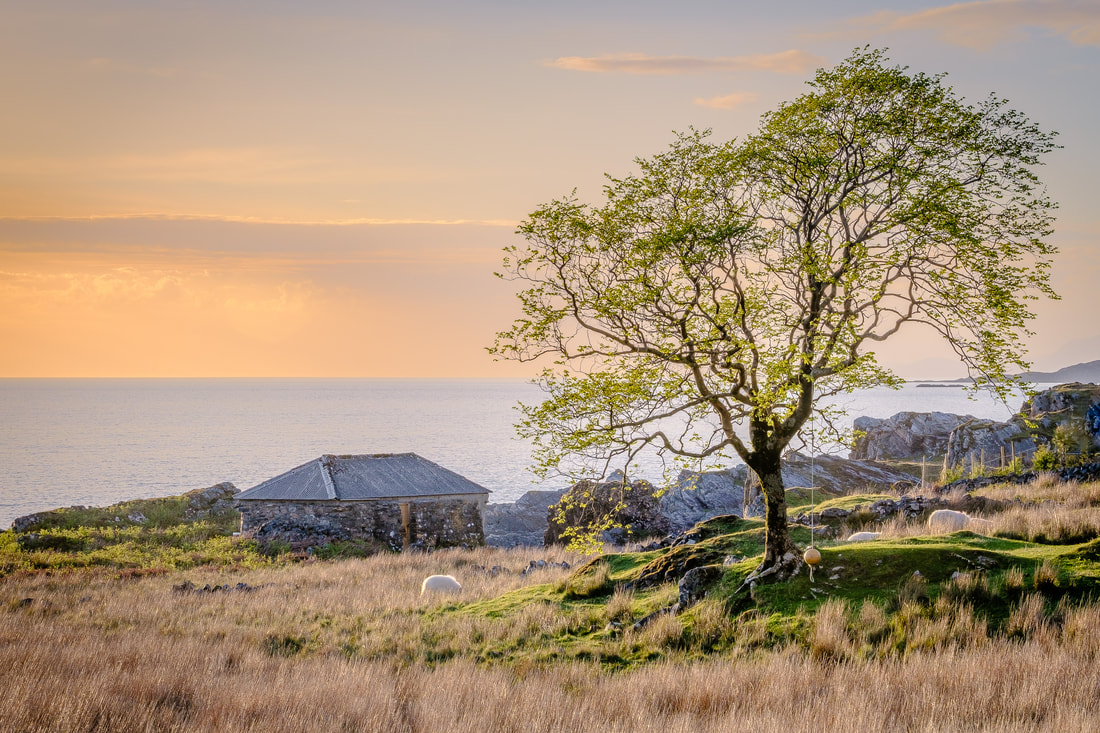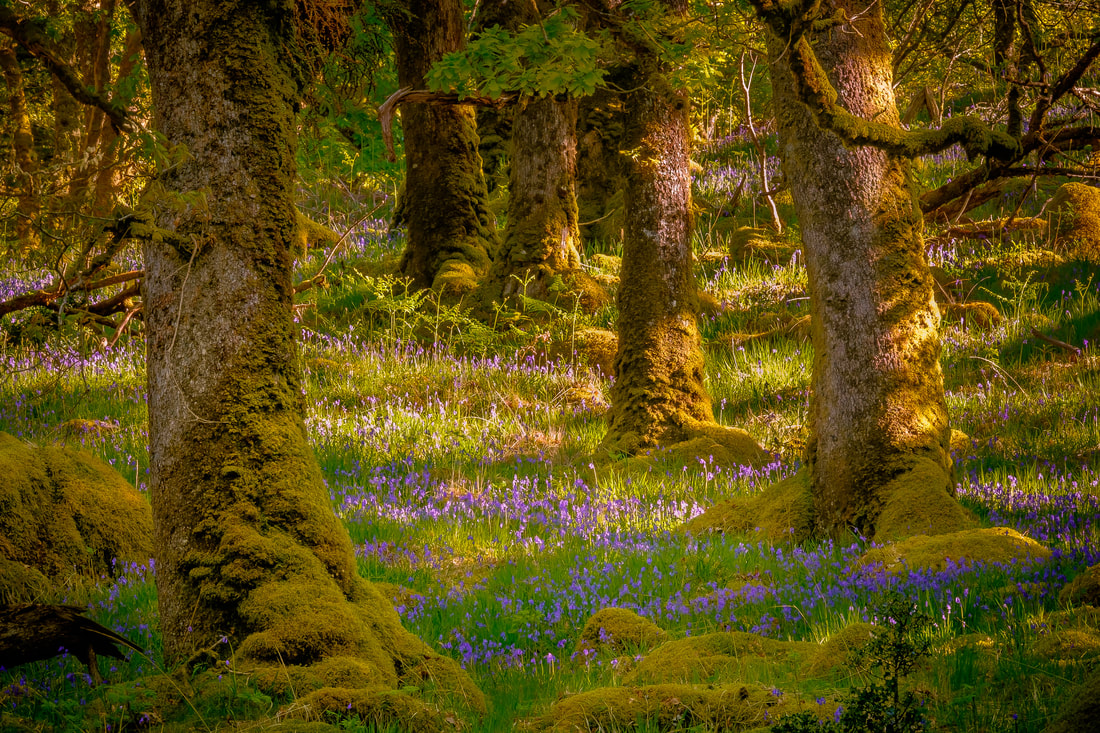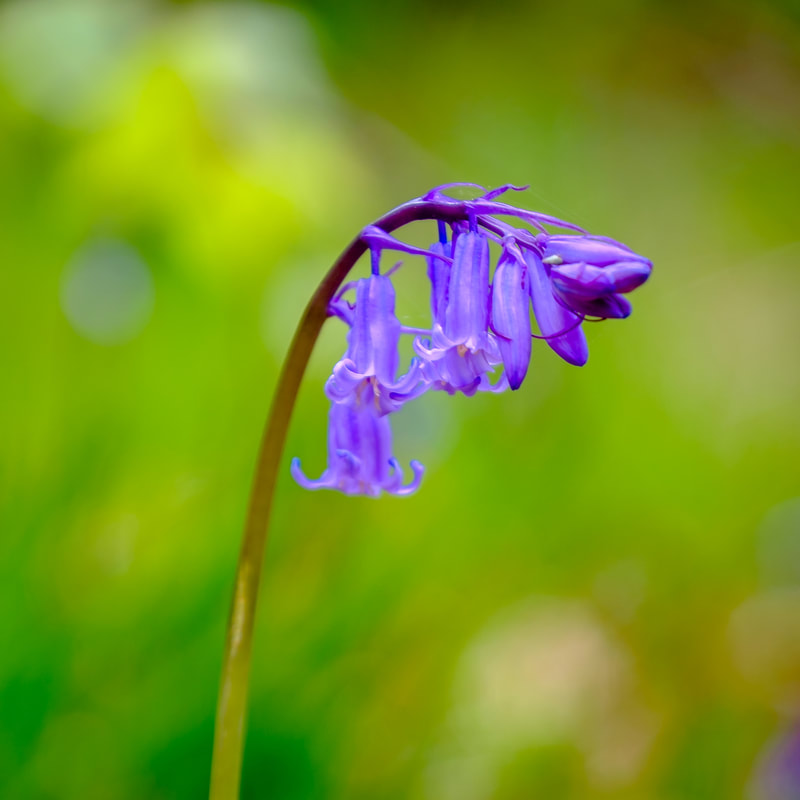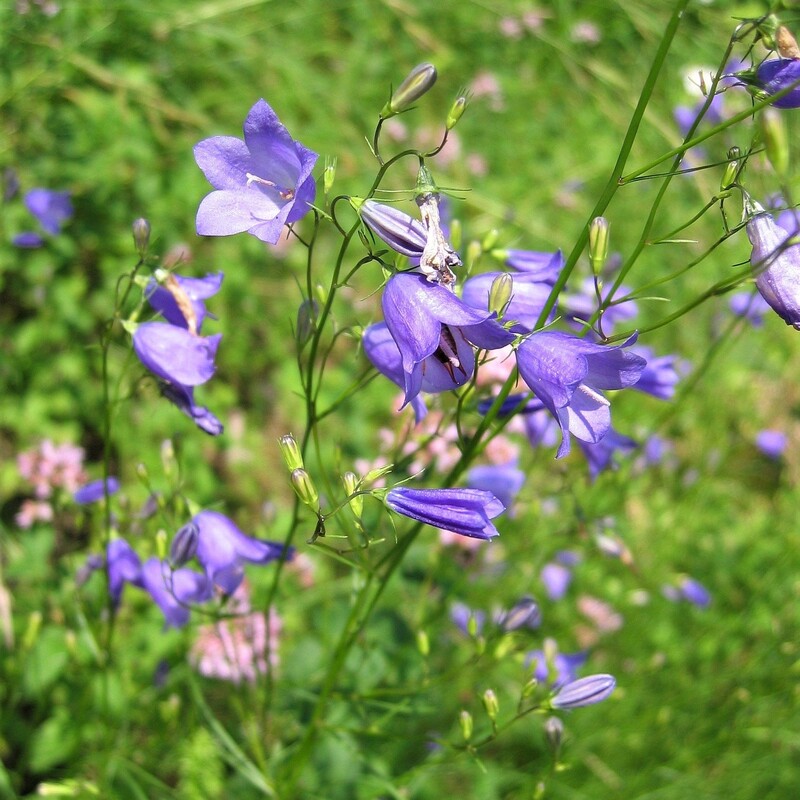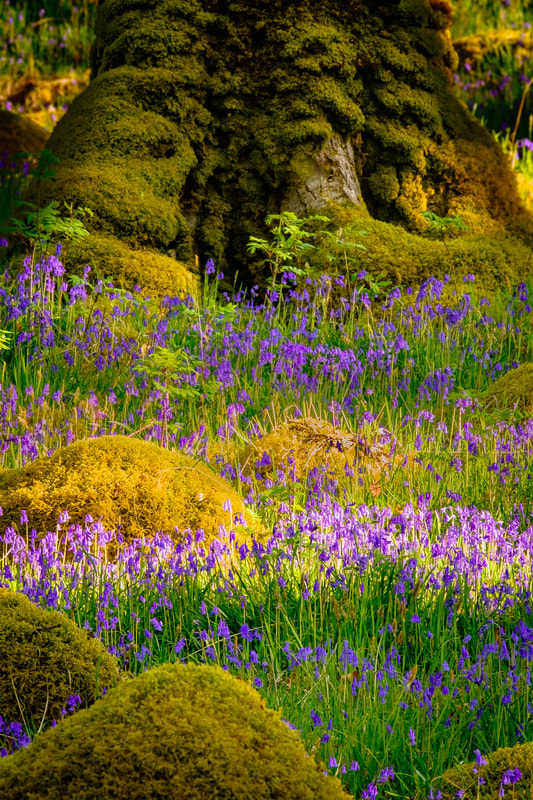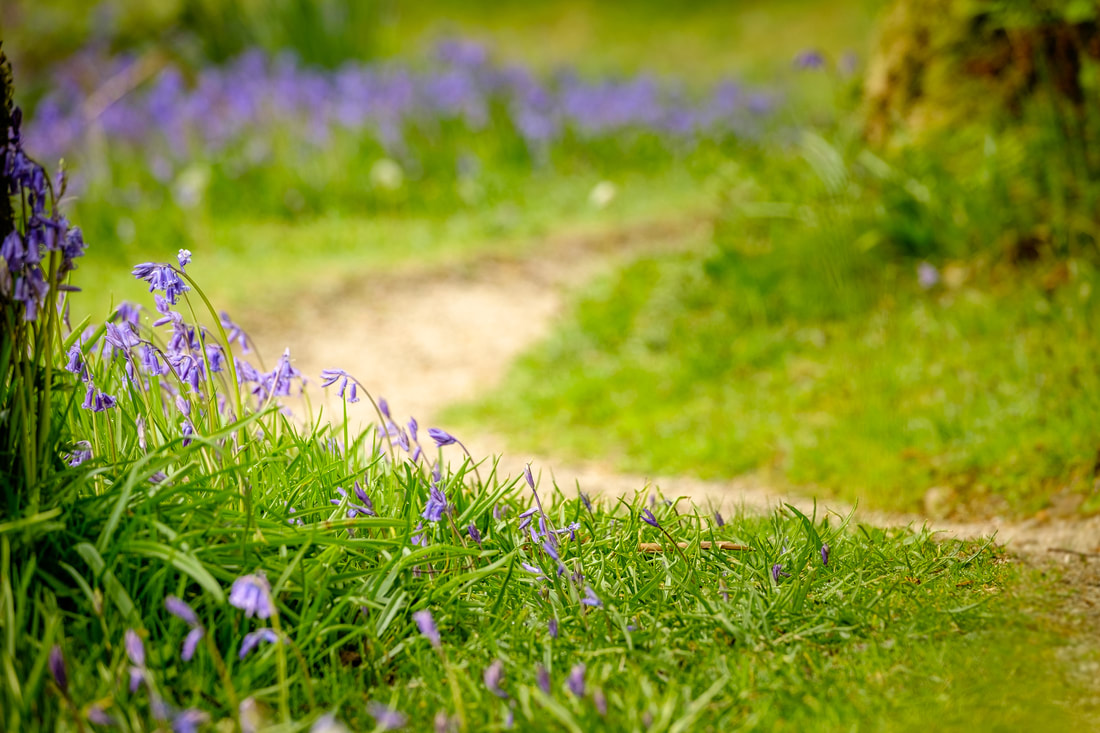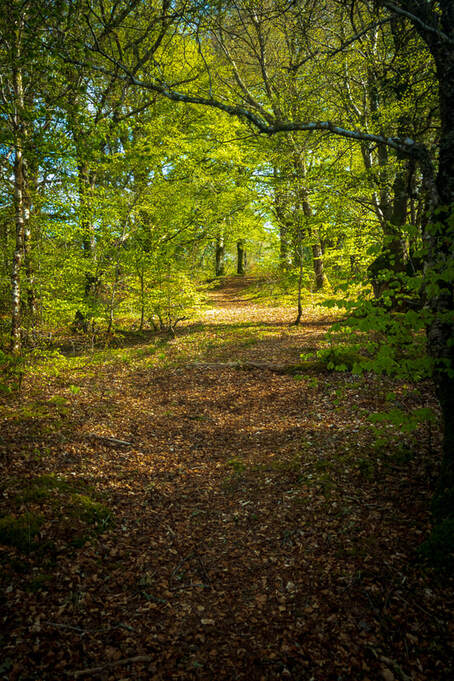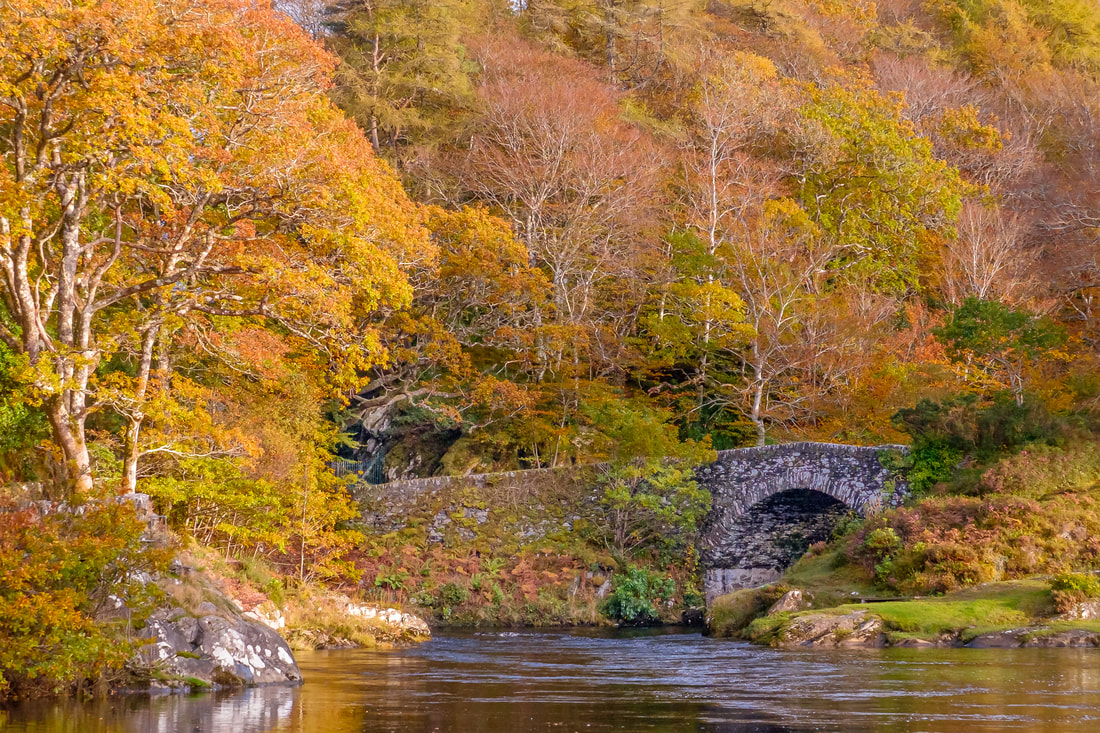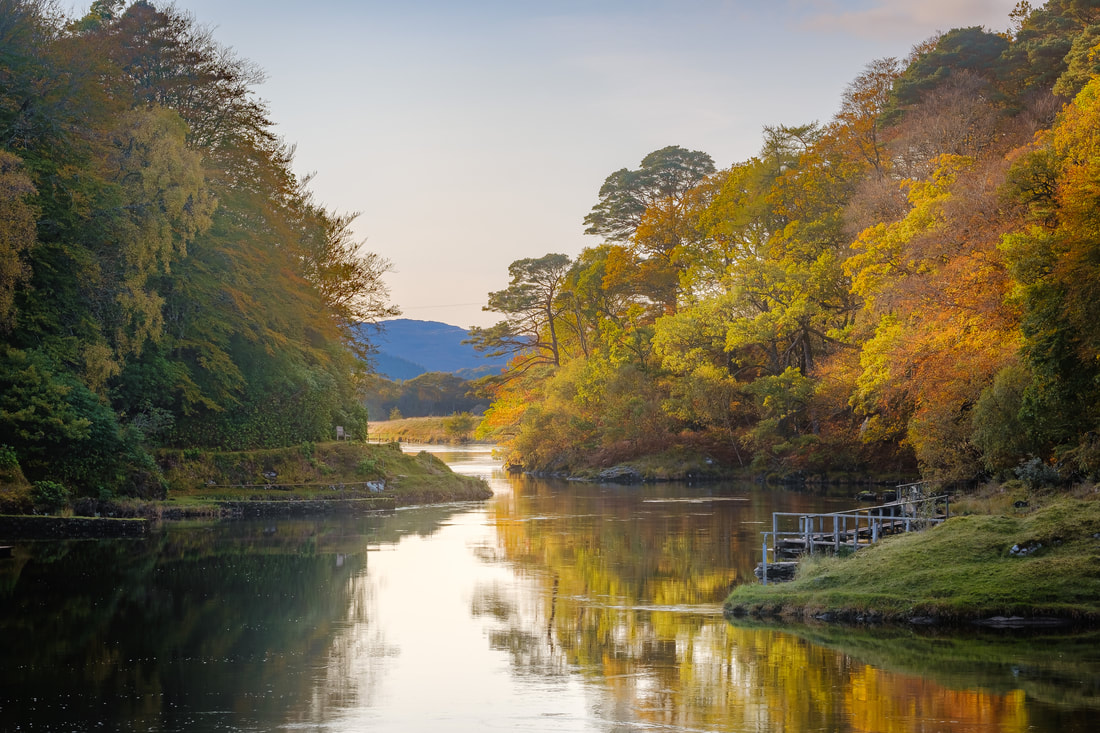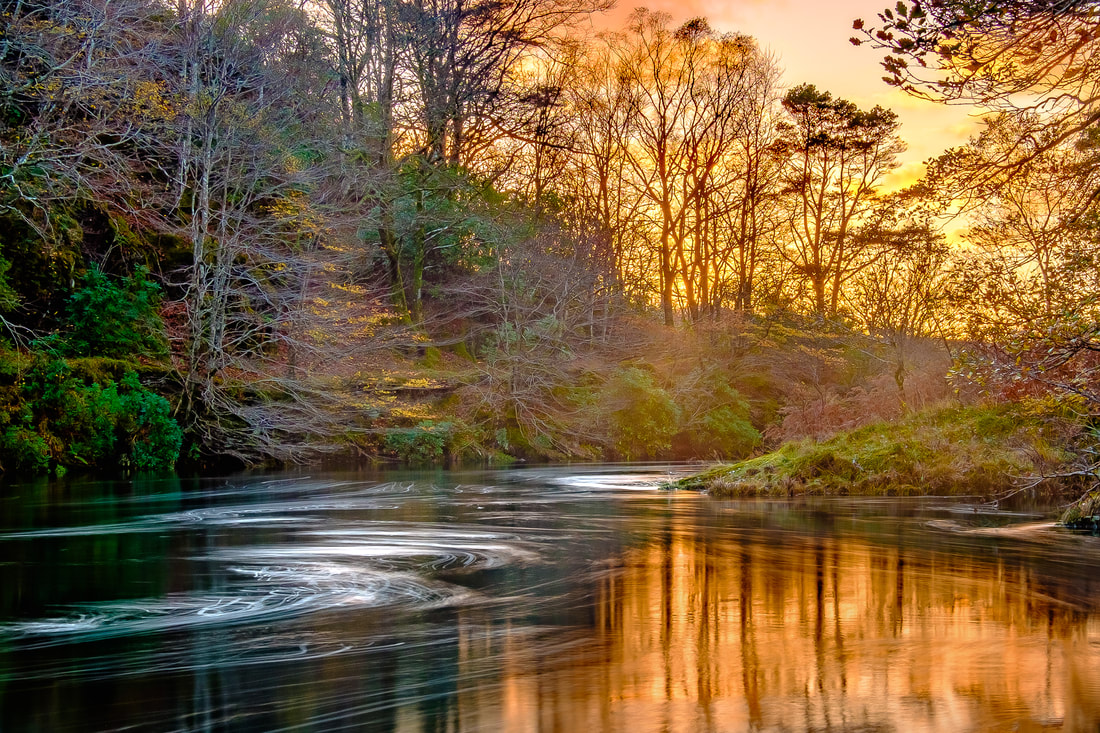|
This month’s thoughts come from a set of six images taken one morning when I decided to explore the boggy ground around the head of Loch Moidart at Ardmolich. I had driven by there the night before on my way to Glenuig and my eye was drawn to a large swathe of cottongrass that covered much of what I could see. This fluffy headed plant is a common sight on the Peninsula from around late May and into midsummer. In many places they are dotted here and there, but occasionally they form more substantial stands such as the one I had spotted and when they do, they are well worth photographing. Despite its appearance, cottongrass, also known as bog cotton or ghost grass is neither cotton or grass. It is in fact a sedge, which is a group of plants that are closely related to grasses. Three species of cottongrass are likely to be found in Scotland: Hare’s-tail Cottongrass, Common Cottongrass and Broad-leaved Cottongrass. All three love damp, acidic environments so are well at home in the peat filled salt marsh that is at Ardmolich. Hare’s-tail cottongrass has just one ‘cotton’ head at the tip of its stem in the form of a tidy, almost spherical tuft, reminiscent of the tail of a rabbit or hare, hence the name. On the other hand, broad-leaved cottongrass and common cottongrass both have several and more unkempt ‘cotton’ heads drooping from their stems that look a bit like cotton wool that has been pulled apart. Having looked at the plants I was photographing, I decided that they were common cottongrass because of the narrow leaves and stems that they had. I wandered around the salt marsh, carefully making my way around innumerable water pools and across countless tussocks until I found myself in the middle of a sea of white, fluffy seed heads gently swaying in the slight morning breeze. I knelt down to take a closer look at the tufts of ‘cotton’ and found myself with an eye level view across the top of them to the hills at the other end of Loch Moidart. It was from there that I took my first photograph, using a long focal length to compress and emphasise the sea of white that floated before me. With the wide perspective shot taken, I focused my time on taking a series of shots that captured the cotton grass in more detail, eventually homing in on a single plant that I was able to isolate from all the others around it by using careful composition and a wide aperture. Coming to the end of doing this, I began to wonder if this fluffy, delicate plant had been used for anything in the past and if it had any folklore associated with it.
Unsurprisingly, one of the primary historic uses of cottongrass was as a stuffing material, particularly by rural communities where resources were limited, and every available material was put to good use. I found references to its downy fibres being used as an insulating stuffing for pillows, mattresses, for lining shoes and even as an absorbent pad for infants to use at night instead of a nappy. When it comes to Scottish folklore, one common theme appears to be the association of cottongrass with the faeries. A number of tales describe cottongrass as one of their favourite plants because they used the soft, fluffy tufts to make their beds, while other tales have described patches of cotton grass swaying gently in the wind as the sight of faeries dancing. However, it is in Shetland where the clearest association of cottongrass and mystical beings exists. It is known locally as Lucka Minnie’s Oo, or wool. A witch from Shetland folklore, Lucka Minnie, was said to roam the hills in summer to collect this wool, which she’d process on a card obtained from the faeries and then use it to knit her clothes. When I tried to find out a bit more about her, I came across two conflicting stories. One described her as a fearful ‘trow’ or troll who met her end while chasing after a young boy who she’d intended to eat for her dinner. The other painted her as a rather benevolent character who would guide lost travellers through treacherous boglands by revealing paths marked by distinctive clumps of cottongrass. I guess that if one were to be true, I hope it would be the latter, which I think would be a fitting tale to link with the delicately beautiful tufts that are the seed heads of the cottongrass.
0 Comments
Despite June being colder than normal, the greening up of the landscape we saw in May was followed by a profusion of wildflowers coming in to bloom to cover the landscape with a multitude of bright colours. This year, it seemed to me that the most prominent amongst them has been the foxglove, with its tall purple spire of bell shape flowers often found rising above dense blankets of bracken that cover the ground from late May onwards. Their size and colour make them visually striking plants and a pair that I found out at Dorlin one morning provided me with the ideal subject on which to anchor this shot of Castle Tioram. While foxgloves, scientifically known as Digitalis purpurea, are undoubtedly striking plants, they are renowned for their potent medicinal properties and have played a key role in treating heart conditions. In the late 18th century, the English physician William Withering discovered that digitalis, an extract from the foxglove, contained digitoxin and digoxin. These two compounds help strengthen and regulate the force of the heart contractions and have been used to treat irregular heartbeats and manage the symptoms of heart failure. In the past, digitalis has had other medicinal uses and was listed in Nicholas Culpeper’s 1652 herbal medicine guide, The English Physician, as a treatment for “the falling sickness”, or epilepsy. One famous person who may have been treated with digitalis for epileptic seizures was Vincent Van Gogh. Many art historians believe that the yellow haze that this would cause in the sight of patients receiving this type of treatment may be responsible for his “yellow period”. This was a time when yellow dominated many of his paintings, and particularly The Starry Night, a painting in which a yellow corona surrounded the moon and each star in it. When it comes to folklore, views are divided on where the common name for Digitalis purpurea comes from. In some parts of Scotland, there is a strong association between the plant and faeries, with foxglove seeming to be a corruption of “folksglove” thus implying that the flowers were the gloves of faeries. In this context it is believed that these gloves are worn by these mystical beings to help them avoid leaving fingerprints when meddling in human affairs. Another myth tells of the foxglove’s bell-shaped flowers being used as little hats or homes by faeries, with children often warned against picking them to avoid offending the fairies who might live inside them and to not bring misfortune upon themselves. Foxgloves were also thought to have protective properties and hanging a sprig of foxglove outside a house was believed to ward off evil spirits and protect the inhabitants from harm. While in some areas, foxgloves were planted around homes and barns to safeguard against witchcraft and to ensure the health and safety of livestock. Alternative folklore suggest that the name “foxglove” comes from the idea that the flowers are the right size and shape for foxes to wear on their paws. According to this legend, foxes, known for their slyness and stealth, would put the flowers over their paws to muffle their footsteps as they hunted or avoided predators. This idea not only highlighted the fox’s cunning nature but also lent an almost magical quality to the foxglove plant, suggesting that it provided some supernatural aid to these clever animals.
As I write this, we are about halfway through meteorological Spring and the recent cold and wet weather seems to have delayed the awakening of the landscape from its winter slumber. The dawn chorus has not yet filled the early morning air with birdsong and the spring flowers are only just beginning to cover the ground with the usual multitude of bright colours. However, as April turns into May, I’m hopeful that I’ll soon hear my first cuckoo, whose distinctive call well and truly heralds the arrival of spring, just as it did when I was out at Smirisary on a beautiful mid-spring evening and captured the image below. In my mind, the cuckoo is one of the most iconic migratory birds to visit us each year. Its distinctive "cuck-oo" or "coo-coo" call resonates through misty mornings and still evenings, carrying promises of warmer days and the vibrant rebirth of flora and fauna. In addition to this, the bird itself is intertwined with various superstitions and legends.
One prevalent belief is that the timing of the cuckoo's arrival can predict the weather for the upcoming season. If the cuckoo is heard early in the spring, it was said to foretell a warm and prosperous summer ahead. Conversely, a late arrival was thought to signal a cold and harsh season, causing anxiety among farmers and villagers who relied on favourable weather for their livelihoods. The cuckoo's association with prophecy extends beyond meteorological predictions and into matters of love and luck. In some Scottish communities, it was believed that hearing the first call of the cuckoo could bring fortune to couples seeking to conceive a child. Newlyweds would eagerly await the arrival of the cuckoo, hoping that its call would bless their union with fertility and abundance. However, not all superstitions surrounding the cuckoo were benign. In certain folklore traditions, the cuckoo was viewed with suspicion and even fear, often being portrayed as a symbol of deceit and trickery. One particularly ominous belief is the notion of the "cuckoo's curse," which suggests that hearing the bird's call on certain days, especially Sundays or while in bed, could bring misfortune or even death to the listener or their family. The mysterious nature of the cuckoo is further accentuated by its peculiar habits, including its brood parasitism behaviour. Unlike most birds, which build nests and care for their young, the cuckoo lays its eggs in the nests of other bird species, relying on them to raise its offspring. This behaviour has led to the cuckoo being associated with themes of deception and betrayal in folklore, because it exploits the labour and resources of unwitting foster parents. Beyond its cultural significance, the cuckoo's presence also serves as a barometer of ecological health, reflecting the condition of its breeding habitat and the availability of its preferred food sources. Concerns about habitat loss, climate change, and the decline of insect populations have led to conservation efforts aimed at preserving and restoring the cuckoo's habitat. They include protecting vital breeding grounds, restoring degraded ecosystems, and raising awareness about the importance of migratory birds. Despite these efforts, the cuckoo faces an uncertain future in Scotland. Like many migratory birds, it must navigate a perilous journey here which is fraught with challenges, while avoiding predation and dealing with climate-induced disruptions in food availability. In addition, its dependence on other species, such as the reed warbler and meadow pipit, for egg incubation and chick rearing further complicates its conservation. Yet, amidst these challenges, there is cause for hope. The resilience of the cuckoo, coupled with the dedication of conservationists and the support of local communities, offers a glimmer of optimism for its continued survival. By fostering greater awareness, understanding, and appreciation for this charismatic bird the conservationists hope that they can ensure that future generations will be able to delight in the timeless spectacle of the cuckoo's arrival in a Scottish spring. I, for one, hope that they succeed. My seventh Spring of living here on the Peninsulas has come to an end and I find myself reflecting on something that never ceases to mesmerise me during late May and early June each year. It is the sight of the delicate blue coloured, bell-shaped flowers of the bluebell creating intense blankets of colour in the woodlands, on the hillsides and along the verges throughout the length and breadth of the Peninsula. However, are these really bluebells I am seeing in this incredible wildflower spectacle, or are they something else? Well, it seems that these little plants that spend most of the year as bulbs underground in our woodlands and hillsides, are what botanists call ‘wood hyacinths’ or “Hyacinthoides con-scripta” and have been given the common name of “English Bluebell” because their flowers are indeed blue, and they are indeed shaped like a bell. What about the Scottish Bluebell though? Well, do you remember Scottish Bluebell Matches and the delicate blue and bell-shaped flowers on the matchbox? These are completely different from the “blue bells” on the plants in our woodlands. They are in fact “Campanula rotundifolia”, a creeping, rooted perennial that flowers from July to September and more commonly known as the Harebell. It favours dry, grassy places, so you will find it in the dry land around our sandy beaches as opposed to in our damp, shady woodlands. Many English Bluebell tales involve dark fairy magic with bluebell woods being portrayed as scary, forbidding places that should be avoided. For example, if you do enter a bluebell wood, you should never pick or step on a bluebell for fear of breaking a spell that a faerie has hung on one of the flowers. If you do break a faerie spell, they will get extremely upset, seek you out and enchant you in such a way that you would be drawn further into the woods to wander lost for evermore. Folklore says that you also need to be careful with the Scottish Bluebell because its common name is rooted in magic. Some say that the name “Harebell” was given to the flower because witches would turn themselves into hares and hide among them. It may also be the reason why the names Witch's Thimbles and Witch Bells were used for the flowers.
So, there you have it. Hyacinths or Harebells? English Bluebells and Scottish Bluebells? Different plants linked by a common name and a whole lot of myth and legend, both of which you should not damage for fear of being visited by angry faeries, witches or indeed, the Aul’ Man himself.
May is probably the month of the year that I look forward to most because it is the month in which the landscape well and truly awakens from its winter slumber. The dawn chorus fills the early morning air with birdsong, spring flowers cover the ground with a multitude of bright colours and trees burst with new leaves to create beautiful and vibrant sights in our woodlands. So, on bright May mornings while walking at Sàilean nan Cuileag near Salen and Phemie’s Walk near Strontian, I was compelled to capture the scenes shown in the images below because the fresh, bright green colour of the grass on the ground and the leaves on the trees was such a beautiful and vibrant sight. This ‘spring green’ colour is such a potent sign of new life and renewal. So much so, that it’s little wonder that Beltane, an ancient Celtic festival celebrating joy, renewal, and community falls on the first day of May. Beltane marks the beginning of summer in the Northern Hemisphere and is considered one of the four major seasonal Celtic festivals along with Samhain, Imbolc, and Lughnasadh. As well as joy and renewal, Beltane is often associated with fertility, abundance, and growth, and has been celebrated for centuries with feasting, dancing, and bonfires. In ancient times, bonfires would be lit on hilltops to honour the sun and promote fertility. The bonfire would be the centrepiece of the Beltane celebrations, symbolising the return of the sun and the warmth of summer. It was also believed to have protective and purifying powers, and people would jump over the flames or pass through them as a form of ritual cleansing and purification. They would also drive their livestock between the fires, believing that the smoke and ashes would protect them from disease and bring fertility to the animals.
I grew up in a large council estate called Burnfoot. It was built between the 1950s and 1970s and, in the early part of these years, a group of local people decided to revive the Beltane traditions and create a festival that would celebrate community and bring the people of this new housing estate together. Central to the festival was the crowning of a local girl as the Burnfoot Queen who, like the May Queens of the past, was chosen for her character and community spirit, and was considered to be a role model for other young people living on the estate.
I remember the crowning ceremony to be a big occasion. It was attended by a large crowd of locals and visitors and once it had taken place, there would be procession through the estate, with the Burnfoot Queen at its head, on an elaborately decorated float. To the small boy that I was, the parade was a colourful and lively event, featuring floats and displays from local businesses and organisations. So much so, that it would bring together people of all ages and backgrounds to celebrate what was known as the Burnfoot Festival and ultimately the community of Burnfoot. As far as I’m aware, this Festival still takes place and I find it fascinating how this event from my distant childhood memories was a revival of Beltane traditions that can be traced back to pre-Christian times in Scotland. I took the image below on a beautifully still late summer evening out a Dorlin, just as the sun was dropping behind Eilean Shona and as oystercatchers were returning to the mudflat on the opposite side of the River Shiel to roost. As they did so, their shrill calls, which are so evocative of the beautiful shores of western Scotland, filled the air. It is such a magical sound, and it is little wonder that the oystercatcher, and its call, features so much in the folklore of the West Highlands and Islands Alasdair Alpin MacGregor, in his book “The Peat Fire Flame” describes how it was related in the Islands that, when Christ was being pursued from one Hebridean Isle to another, he was hidden at low tide by two oystercatchers, who covered Him with seaweed, and kept watch over Him until His enemies had passed. And that it is supposed that for this act of grace, the oystercatcher was chosen to be the gille or manservant of Saint Bridget, Christ's foster-mother. Hence the origin of gille-hridean, the oystercatcher's Gaelic name. An alternative story is that Saint Bride (Bridget) was running away from a band of evil men who were trying to kill her and, after being chased to a beach where there was no place to hide, she prayed to God to thank him for her life and lay on the sand to accept her death. However, before the men reached the beach, oystercatchers, who were patrolling the shoreline, saw her, recognised that she was in danger and covered her with seaweed, hiding her and saving her life. She blessed the species and since that day the oystercatcher has been the brìdean (Brìd-eun ‘Bride’s bird) or gille-brìde ‘servant of Bride’. These two very similar stories may well be pure myth, but there is much written about the bird in the folklore of the West Highlands and Islands. Indeed, they say in the Hebrides that the oystercatcher was originally completely black, and that, in recognition of the two oystercatchers saving Christ from His enemies, it was awarded white plumage on its breast causing it to look like a white cross when it is seen flying towards you. However, the oystercatcher’s most distinguishing feature must be its call and, more often than not, you will hear its shrill, insistent peep, peep, peep long before catch sight of any birds. In Gaelic the cry of the oystercatcher is " Bi glic, hi glic ; bi glic, bi glic! ", meaning ' be wise,' ' be prudent,' ' take care.' One story has it that Saint Bride followed this call across the sea from Ireland in her coracle to finally be guided to the shores of South Uist with an oystercatcher on each wrist. She is also said to have been able to call them to her hand and, in rough weather, send them out to sailors to guide them to safety. This may be why the cry of an oystercatcher was commonly regarded by West Highland mariners and fishermen as a warning of an approaching storm. Video: An Oystercatcher Sunset Chorus, Dorlin, Loch Moidart After hearing their call, you may well spot oystercatchers swooping low over the sea, making a dazzling flight pattern, before eventually landing on exposed sand and mud flats, where they feed on shore-dwelling bivalves such as mussels and limpets, along with other invertebrates like ragworms. I just love watching these gregarious and noisy birds as they quickly run up and down the tideline in an almost comical fashion. To watch this flurry of activity and boundless energy helps you understand why one of the collective nouns for the oystercatcher is a “stew”. The two others I’m aware of are “Rockefeller” and “parcel”, but they just don’t seem to fit the bill as well.
We are now in May, the last month of Spring and the landscape has well and truly awakened from its winter slumber. The leaves have unfurled on the trees, the wildlife is thriving, and the colourful blooms have appeared. We’ve seen snowdrops in February, wood anemones in March, primroses in April and now it’s time for the carpets of bluebells to appear in the ancient woodlands across the Peninsula. This wildflower spectacle is a magical sight and one that leaves you with a feeling that these woodlands with carpets of blue are indeed enchanted. In Celtic folklore, bluebells have a strong association with spirits and faeries. They are often called faerie flowers and their small bell-shaped flowers are believed summon the faeries when rung. This is not necessarily a good thing because faeries are believed to hang their spells on the bluebells to dry and disturbing them may unleash wild magic upon you, leaving you dazed by enchantment and unable to find your way out of the woods. It can be even more serious for children who pick bluebells because it is believed that they could be snatched away by the faerie folk, never to be seen again.
So, if you do visit a bluebell wood, just remember to stay on the path and to not pick or disturb any of the flowers. Besides risking the wrath of the faeries, another good reason to avoid disturbing them is that they are poisonous, and this might be the reason why there are so many old tales and legends warning people away from them. However, these beautiful little flowers have also been valued for their useful properties and have been used over the centuries by herbalists to prevent nightmares and to treat leprosy, spider bites and tuberculosis. They contain at least 15 biologically active compounds that provide them with protection against insect and animal pests and in recent years, some of these compounds have been investigated as possible treatments for HIV infection and cancer. Bluebells have practical uses as well. They produce an exceptionally sticky sap which was used by our Bronze Age ancestors to make a glue that they use for attaching flights of feathers to their arrows. This glue has also been used for several centuries by bookbinders to make and repair books, while in Tudor times, starch was extracted from crushed bluebell roots and used to stiffen the ruff collars that were very much the fashion back then. Finally, some bluebell folklore gives a positive impression of this beautiful little flower. For example, some believe that by wearing a wreath made of the flowers, the wearer can be compelled to speak only truth while others believe that if you can turn one of the flowers inside out without tearing it, you will eventually win the one you love. We are now in well in to October, the second month of meteorological autumn. It is when the number of visitors to the Peninsula reduces, the days become shorter, the nights become cooler, and the sun gets lower in the sky. This brings a quietness to the area and a quality of light that cannot be found at any other time of the year which, when combined with the autumn colours, makes what is a photographer’s paradise even more perfect than it already was. By the middle of the month most of the numerous wooded areas around the Peninsula are normally at or near their “autumn peak”, having swapped canopies of green for tapestries of vibrant reds, golds and ambers. The image above was taken around this time in 2019, which was a particularly good year for the autumn colours, and it shows the trees around the Old Shiel Bridge at Blain in their full autumn splendour. The Old Bridge was built by Thomas Telford in 1804. It spans a narrow chasm through which the waters of the River Shiel pass and seem to come to the boil before they expand in the House Pool, slow down and then run both still and deep. This single span bridge provides an interesting subject that can be photographed from many different angles. This, combined with how the smooth waters of the House Pool and the river downstream of it reflect the autumn colours, make it the perfect place to capture the splendour of the trees at this time of the year. I’ve visited the bridge a few times over the last week or so to find that the arrival of the autumn colours is not quite as advanced as it normally is. Indeed, I can’t help feeling it is a week or two behind and although there are now hints of golds in the landscape, I find my myself wondering if their late arrival means that there will be a poorer show this year.
So, what makes for a good show of autumn colours? Well, the answer lies in the fact that leaf colour comes from pigments, which are natural substances produced by the leaf cells to help them obtain food. There are three pigments: chlorophyll (green), carotenes (yellow) and anthocyanins (reds and pinks). It is the mix of them, as influenced by the weather, that determines depth of colour we get each year:
In addition to this, a warm dry 'Indian summer' is needed so that the leaves work for longer and therefore stay full of these pigments until the reducing hours of daylight and lower night temperatures trigger the colour change. So, if we’re to have another great show of autumn colours this year, let’s hope for some settled weather over the next couple of weeks, followed by some cold nights and dry, bright sunny days. |
AuthorHi, Archives
July 2024
Categories
All
|
Steven Marshall Photography, Rockpool House, Resipole, Strontian, Acharacle, PH36 4HX
Telephone: 01967 431 335 | Mobile: 07585 910 058 | Email: [email protected]
Telephone: 01967 431 335 | Mobile: 07585 910 058 | Email: [email protected]
All Images & Text Copyright © 2024 - Steven Marshall - All Rights Reserved







